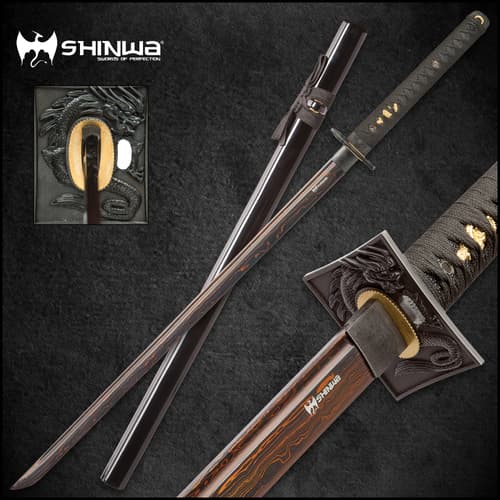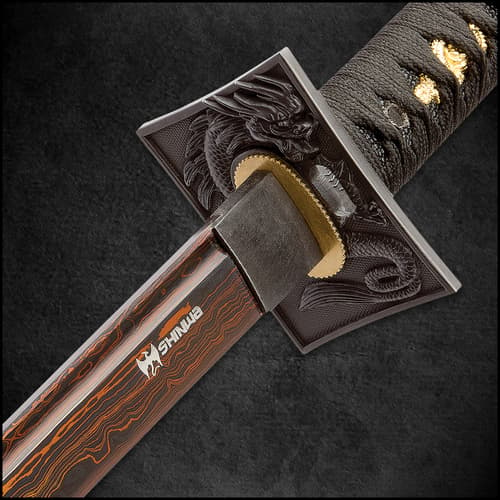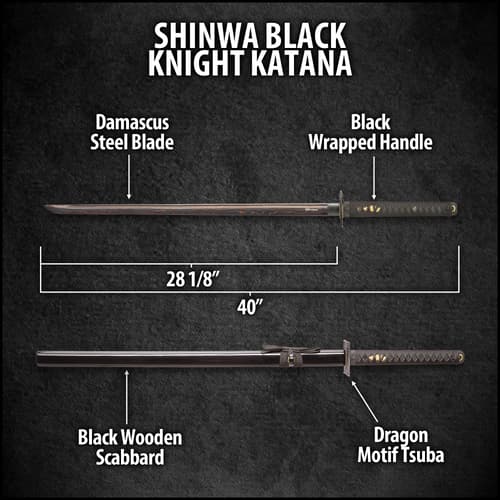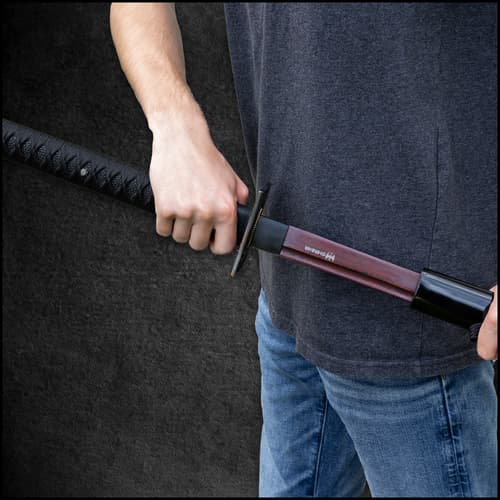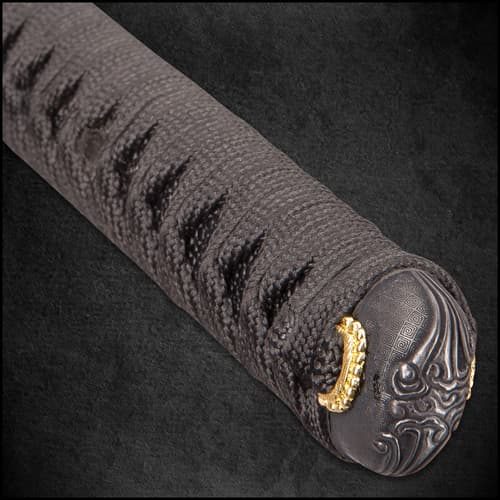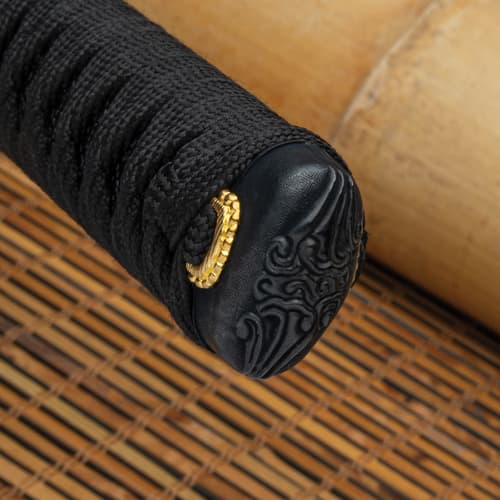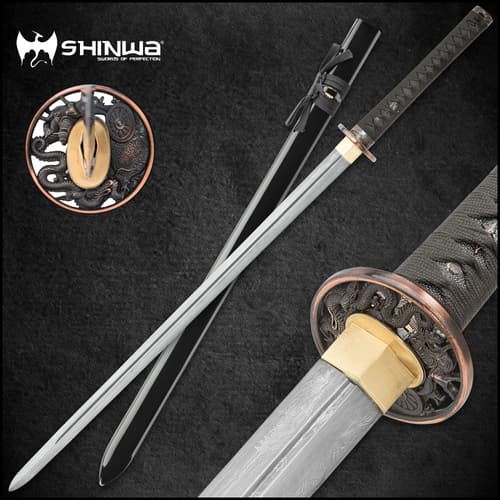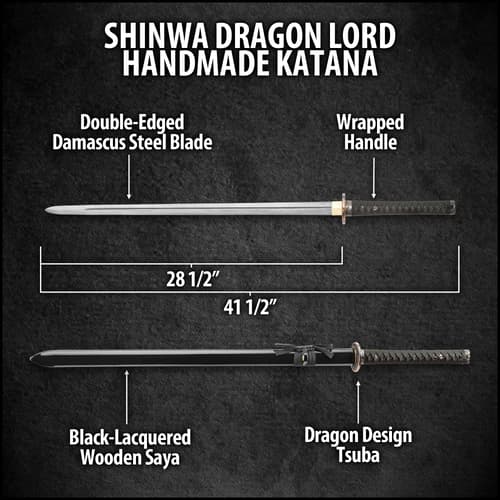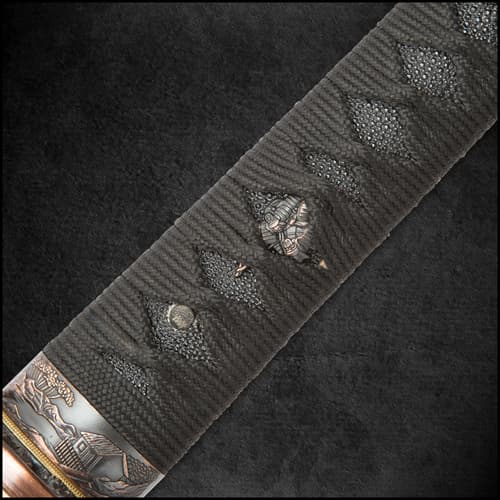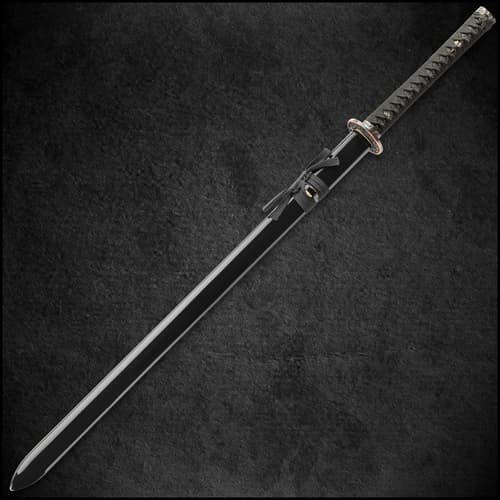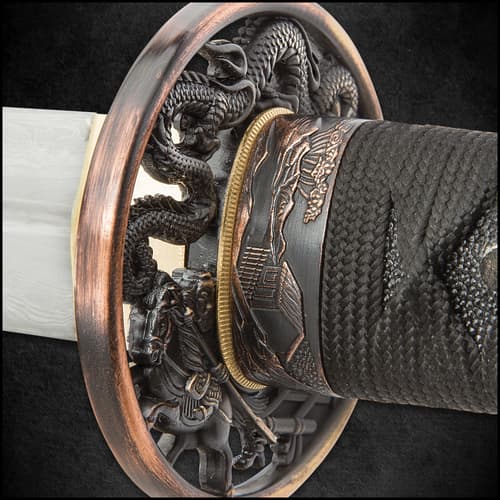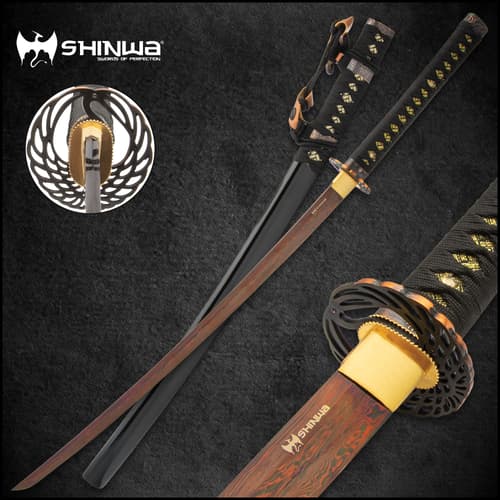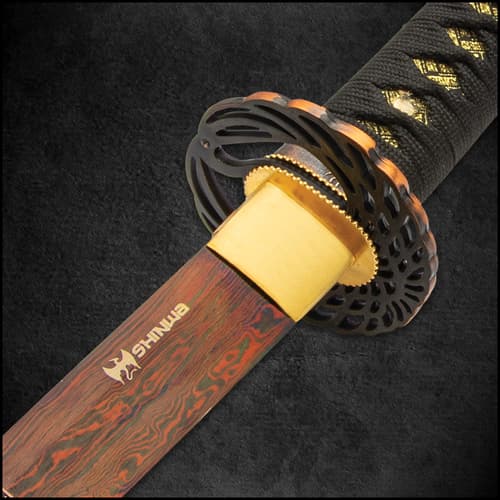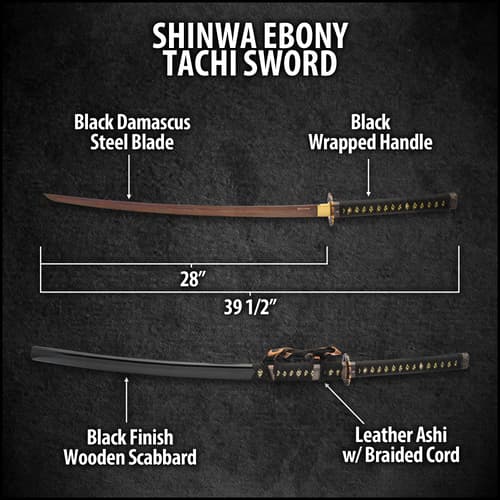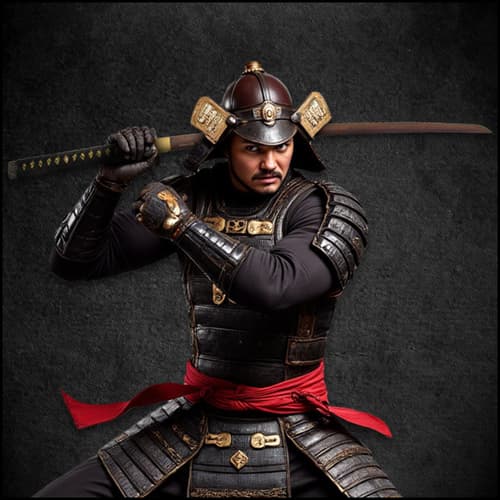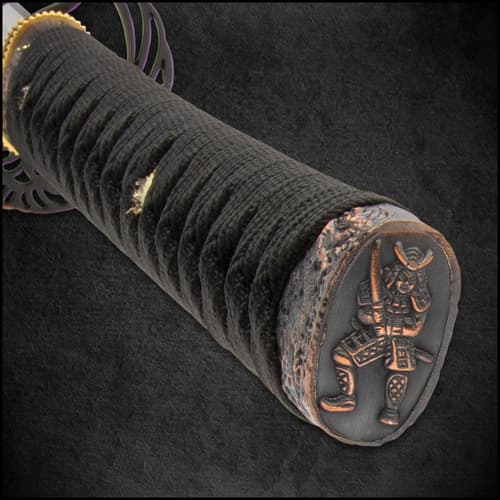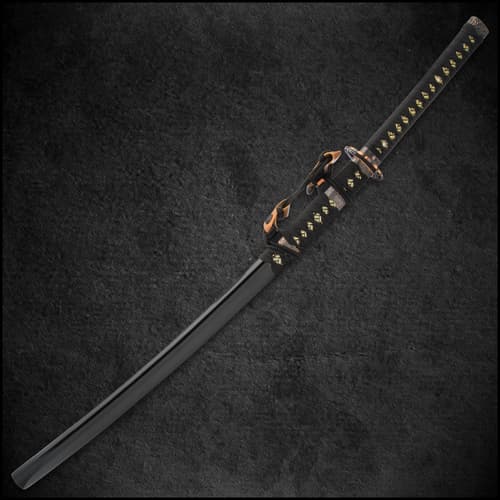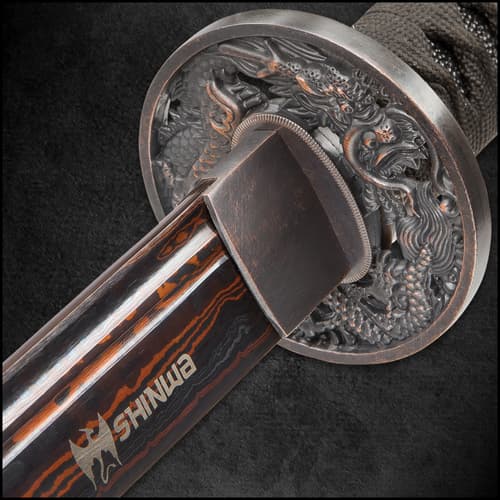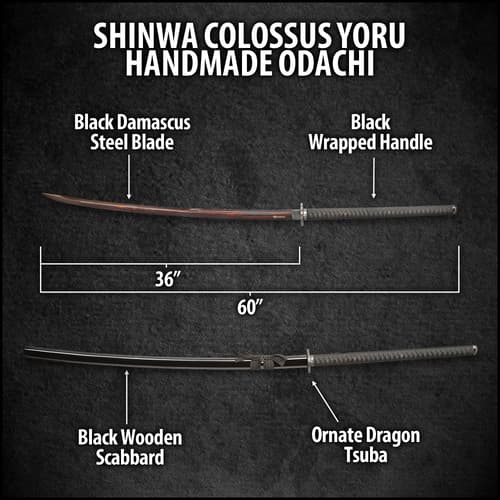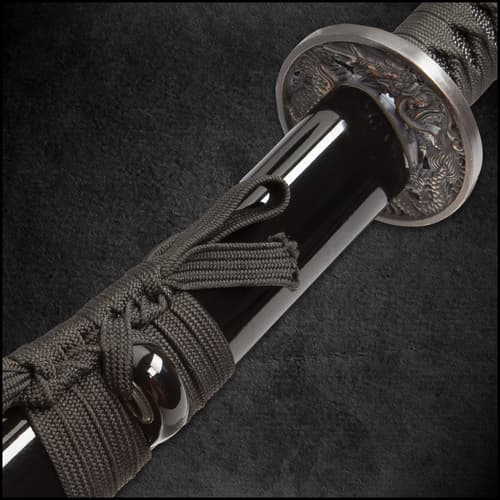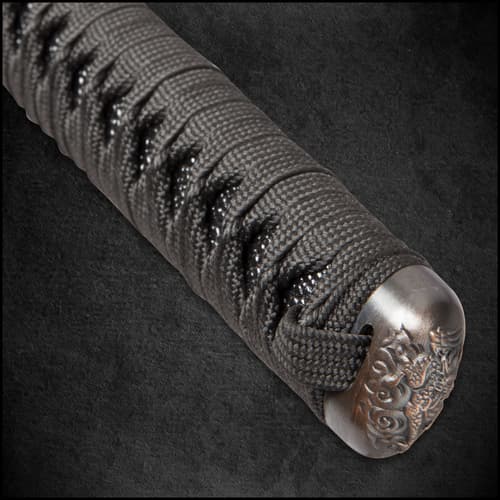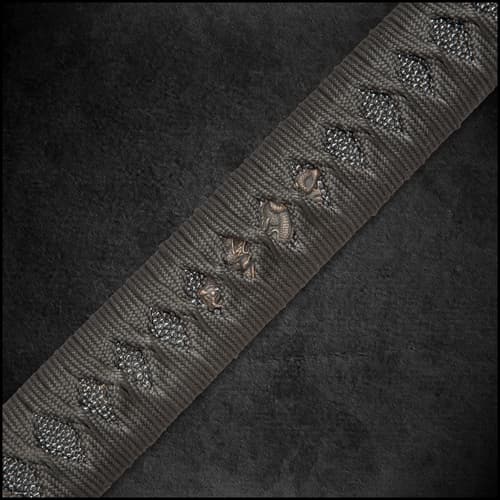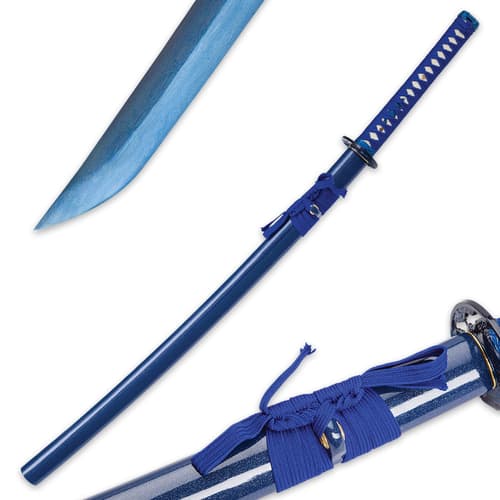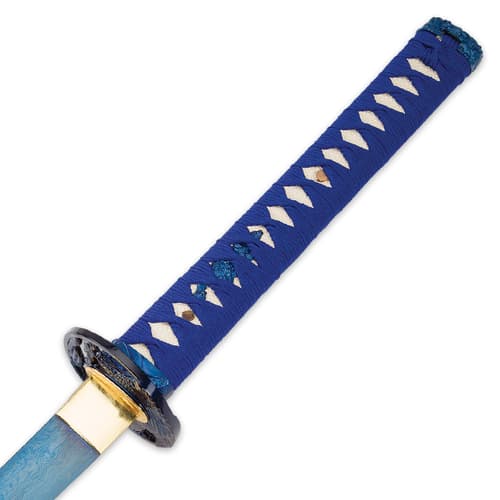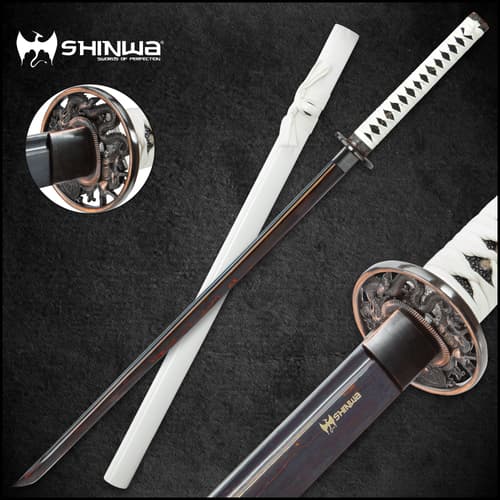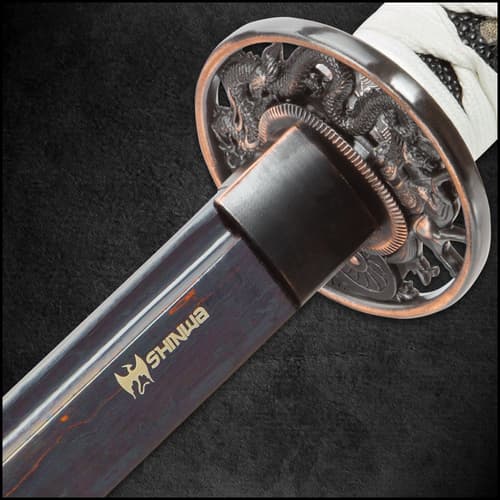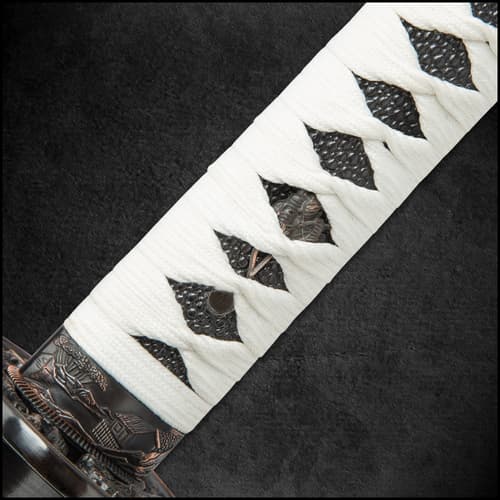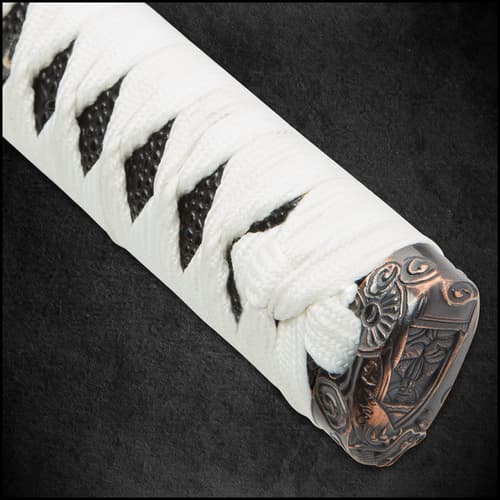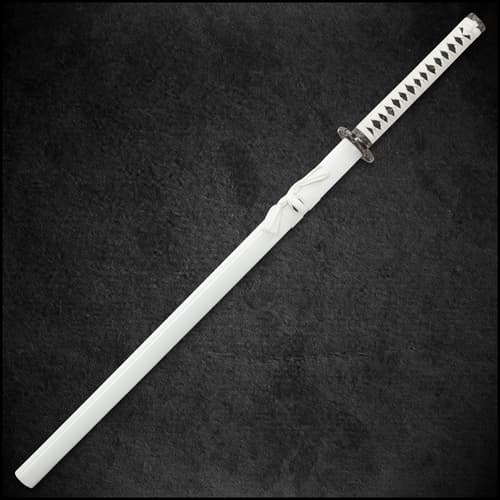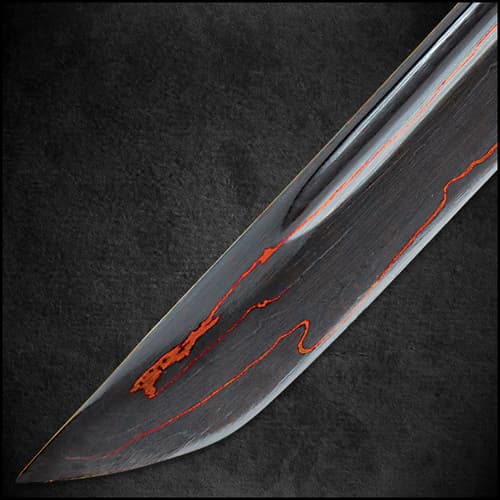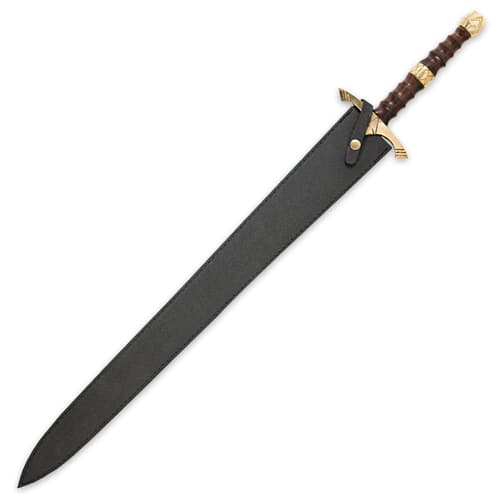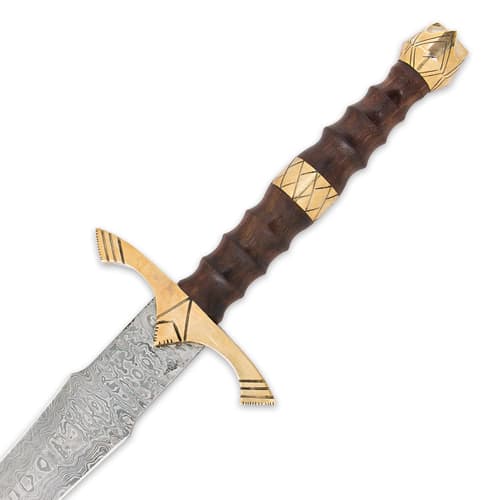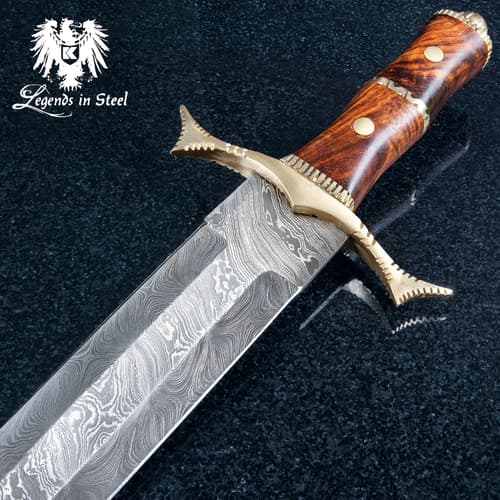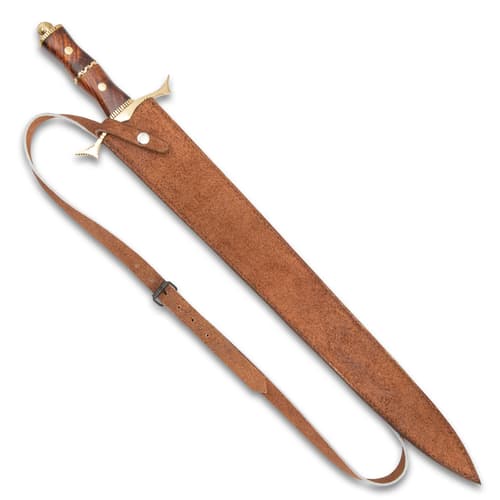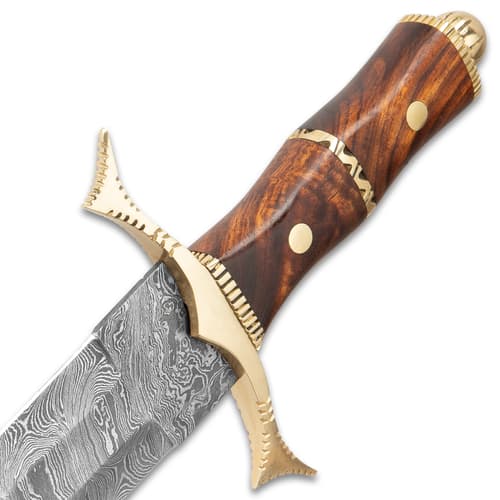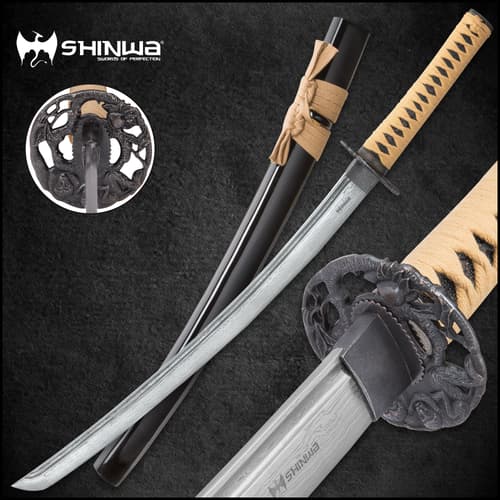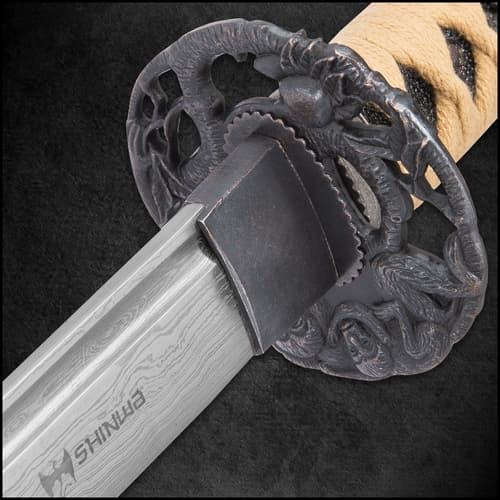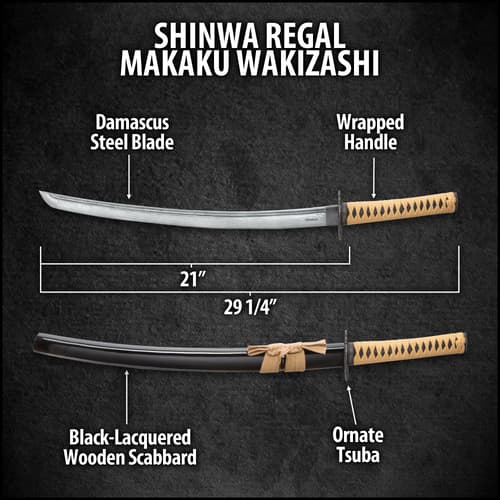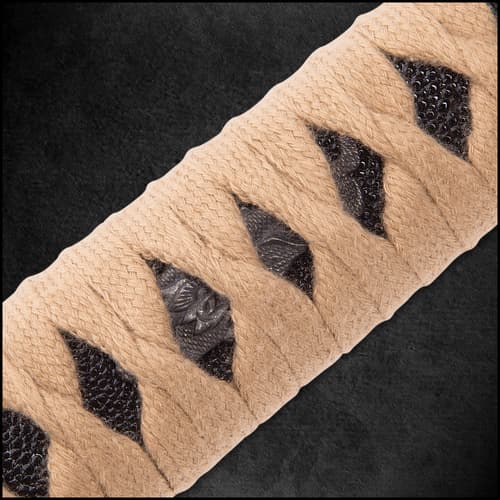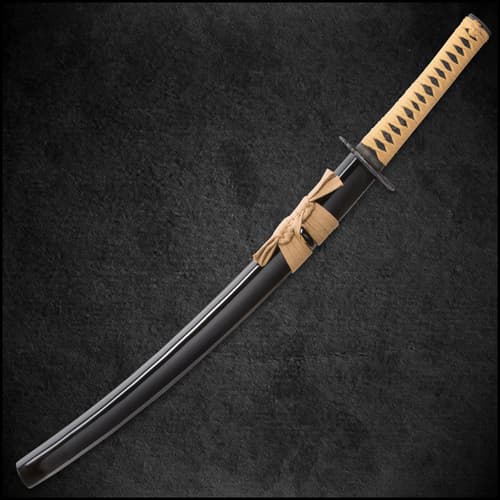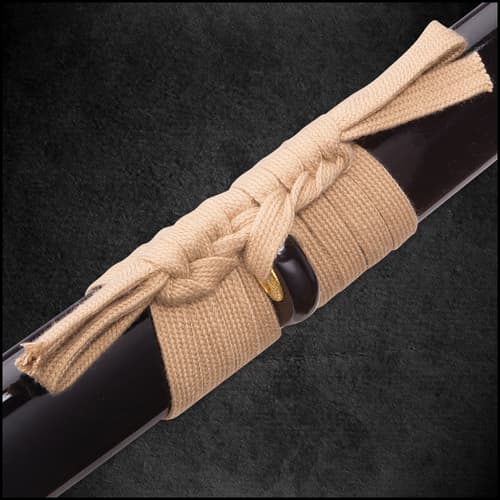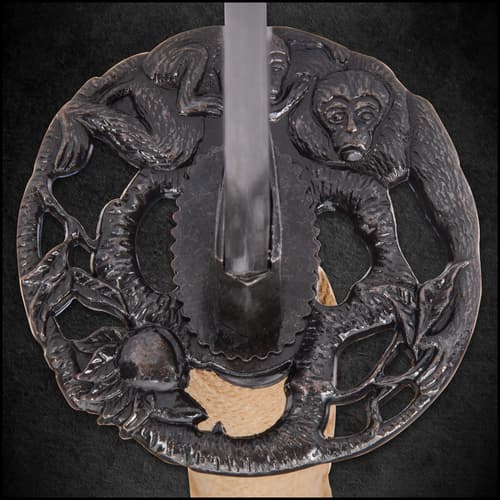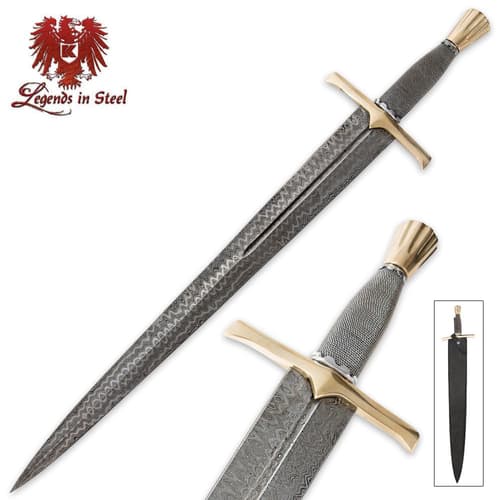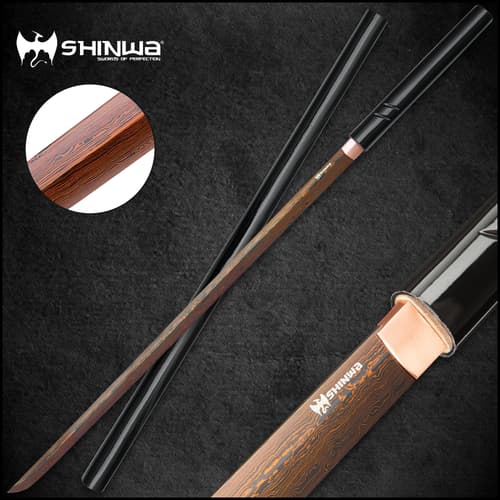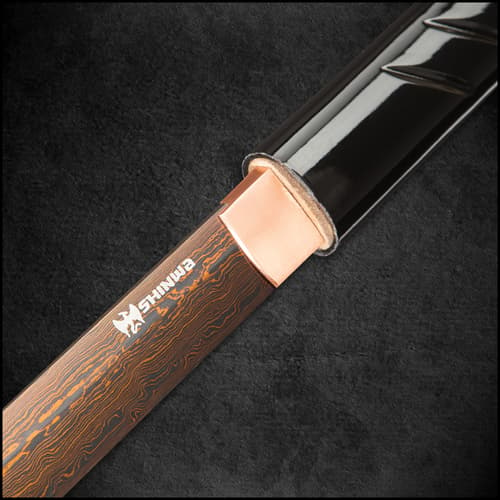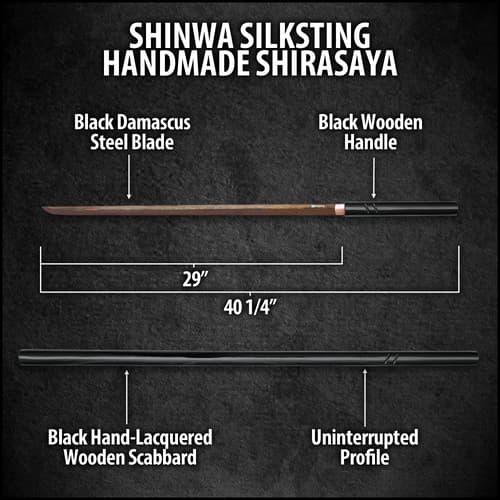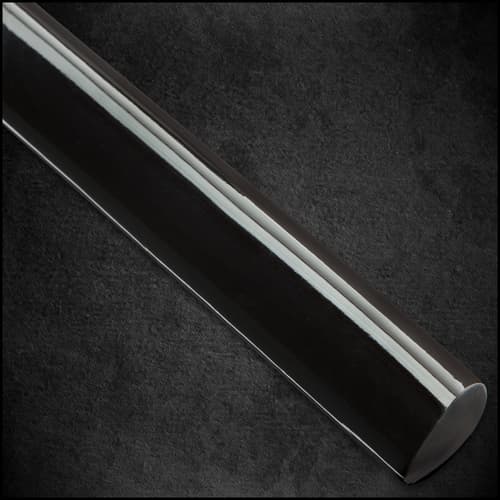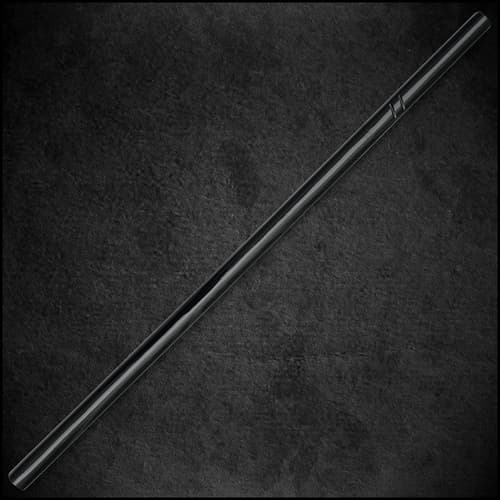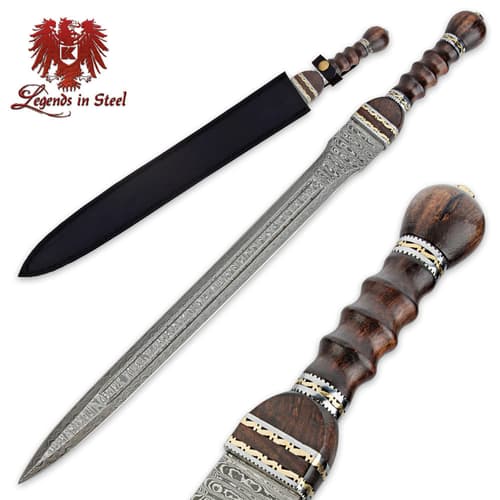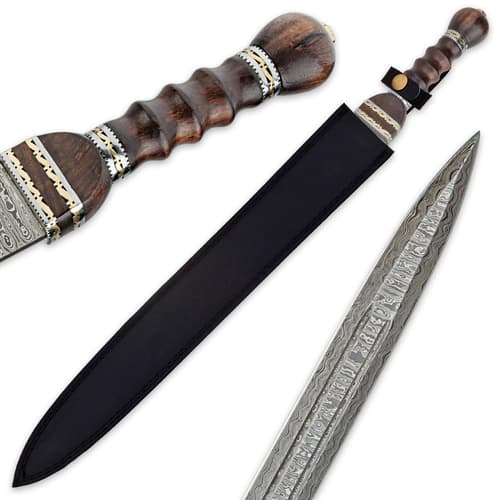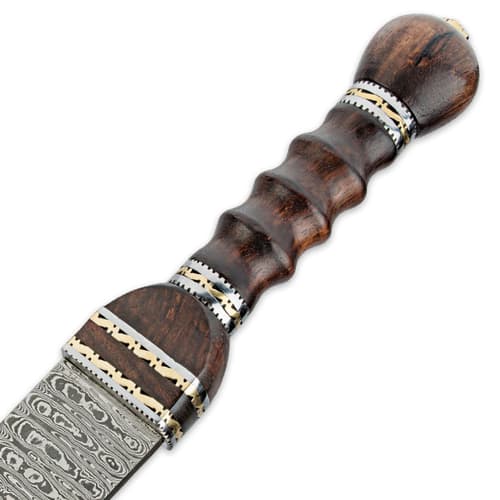Damascus Swords & Katanas
Step Into the World of Damascus Sword Craftsmanship
There’s a certain magic in holding a Damascus sword - you feel it the moment you wrap your fingers around the grip. It’s not just a blade, it’s history alive in your hands. At BudK, we’ve spent years curating a collection that respects both the ancient traditions and the modern steel techniques used today.
Truth be told, we’ve got a bit of a soft spot for Damascus steel. Maybe it’s the distinctive flowing water look of the pattern welded steel, or maybe it’s the way every sword seems to carry a story forged through fire and hammering. Either way, we’re here to guide you through this timeless world - one steel sword at a time.
Shop Sword Selection:
The Damascus Sword Is Steel Forged With Soul
You know that feeling when something just feels right? That’s exactly what happens when you pick up a Damascus sword. These blades aren’t just shaped - they’re born through fire and patience. The layers of steel are folded and hammered, over and over, until they form that signature flowing water pattern that catches the light like a secret waiting to be shared.
It’s not mass production. It’s artistry. Each Damascus blade carries its own fingerprint, and honestly, that’s part of the charm. You’re not getting something off an assembly line - you’re getting a blade with character. And if you’re the kind of person who appreciates fine craftsmanship, hand forged detail, and the soft but flexible strength of folded steel, this is your match.
Tradition Lives On With The Damascus Katana
Now, let’s talk about the Katana. The Damascus Katana is where tradition meets sheer elegance. If you’ve ever admired the grace of a Japanese sword, you already know this blade belongs in a league of its own. Smooth curves, sharp edges, and a balance that feels like an extension of your arm.
Our clients often tell us there’s something almost meditative about owning a katana made from true Damascus steel. Maybe it’s the way the blade lines flow effortlessly into the handle, or maybe it’s the quiet power stored in the layered steel. Either way, it’s a showstopper. Crafted with pattern welded techniques developed over centuries, this is a folded sword that effortlessly blends history with modern craftsmanship.
Browse Sword Categories:
Power And Precision With The Damascus Gladius
There’s a boldness to the Damascus Gladius that’s hard to ignore. Short, robust, and steeped in Roman history, this blade has an unmistakable presence. Honestly? We think it’s perfect for anyone who appreciates a compact powerhouse - whether you’re a history buff, a collector, or someone who simply wants a decorative blade with attitude.
At BudK, our Gladius swords are crafted with thick Damascus steel blades, which means you’re not just getting strength - you’re getting durability and detail, too. The layered pattern looks like flowing water frozen in time. This pattern welded steel process, developed through centuries of lost artistry, produces blades that are fully functional yet beautifully decorative. Trust us, this is a conversation starter if there ever was one.
Embrace Grandeur With The Damascus Broadsword
If you’re after a blade that really owns the room, let us steer you toward the Damascus broadsword. Wide, formidable, and unapologetically bold, this is the sword that doesn’t whisper - it announces its presence with flair. There’s something deeply satisfying about its heft, a reassuring weight born from pure materials and skilled hammering.
Collectors often pair their broadsword with a polished wooden mount, letting the Damascus steel layers shine under the light. This isn’t just steel - it’s modern steel meeting ancient techniques, creating a blade with unparalleled sharpness and power. And while it looks phenomenal on display, it also feels fantastic in hand. We’re not exaggerating when we say it’s a centerpiece worthy of any collector’s attention.
Shirasaya Simplicity With Damascus Steel Elegance
Sometimes, simplicity speaks louder than extravagance. The Shirasaya style, with its sleek wooden scabbard and matching handle, is the very definition of quiet confidence. No frills, no fuss - just pure, unadulterated craftsmanship.
What we love about the Shirasaya is that it lets the Damascus steel blade do all the talking. You’ve got a clean exterior, but inside, the blade boasts mesmerizing layers and patterns created by the folded steel process. Ideal for anyone who appreciates a balance of decorative artistry and fully functional utility, this sword feels like a lost piece of art rediscovered.
The Damascus Wakizashi Delivers Compact Excellence
Don’t let the smaller size fool you - the Damascus Wakizashi packs a serious punch when it comes to style and craftsmanship. Traditionally, this blade accompanied the Katana, forming a daishō set that symbolized a warrior’s soul. These days, though, the Wakizashi holds its own just fine.
What makes it stand out? Balance, for one. The shorter blade feels nimble yet substantial. And the layered Damascus steel pattern? Absolutely captivating. The pattern welded blade combines sharp cutting ability with flexible strength, making it a smart choice for collectors who want fully functional beauty without overwhelming their display space.
View Sword Collection:
Make a Statement With the Damascus Odachi
Few swords carry the dramatic flair of the Damascus Odachi. Known for its extraordinary length and sweeping curve, this blade was once wielded with both hands on the battlefield. Today, it commands attention from across the room, even while resting peacefully on a stand.
Here’s our honest take: the Odachi isn’t for everyone, but if you have the space and the appreciation for grandeur, it’s a spectacular choice. Imagine the intricate Damascus pattern - forged from pattern welded steel and hammered to perfection - stretched along a blade nearly as tall as you. With its flowing water aesthetic and sharp, cutting edges, it’s more than impressive. It’s unforgettable.
Frequently Asked Questions
- What sets a Damascus sword apart from other blades?
It’s all about the layered materials and craftsmanship. Damascus steel swords feature unique patterns and superior durability, making each piece both functional and decorative. - Are all Damascus swords created the same way?
Not quite! While the folding process shares common steps like hammering and layering, variations in the crafting techniques and materials produce different results across blades. - Is a Damascus sword only meant for display?
Not at all. While many owners proudly display their Damascus swords, these fully functional blades are crafted for strength, sharpness, and detail. Just treat them with respect. - How should I maintain my Damascus sword?
Keep the steel dry, lightly oil it to resist rust, and store it in a safe place. Preserving the blade’s beauty and sharpness is all part of owning a piece of hand forged artistry.

